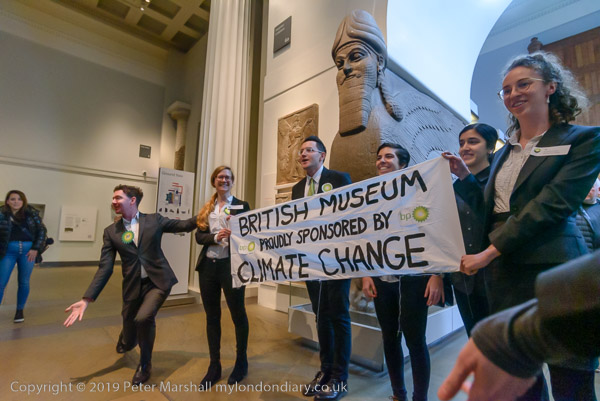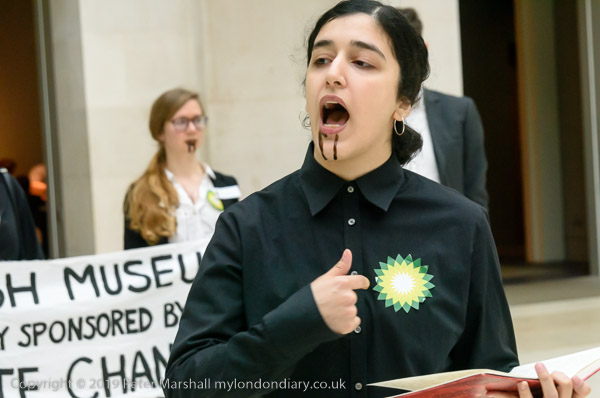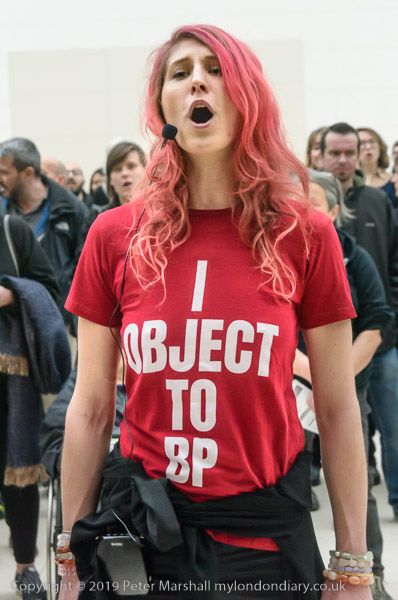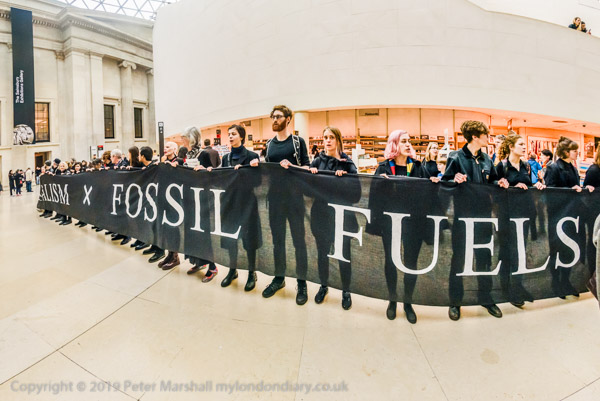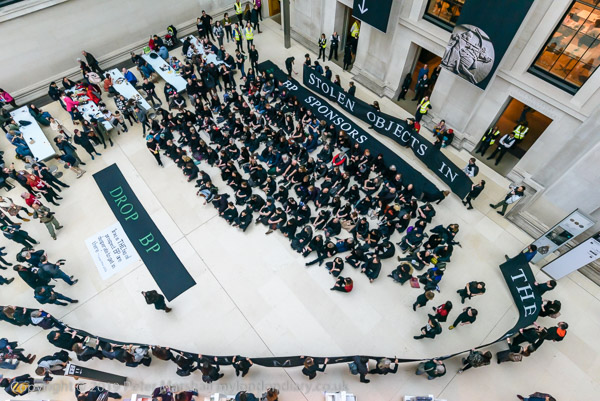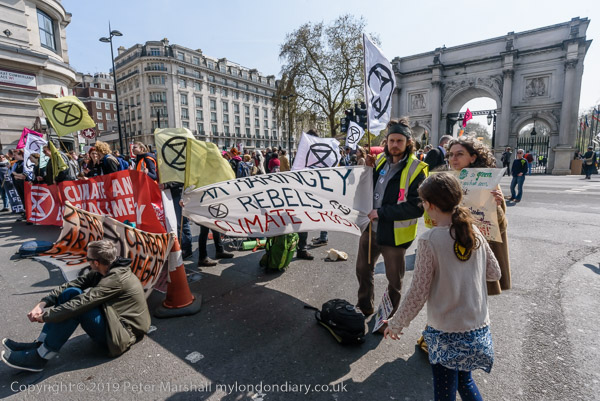
Extinction Rebellion’s largest site during their multiple occupation of London was in the area around Marble Arch. It’s were one of inner London’s busiest north-south routes, Park Lane on the east edge of Hyde Park, crosses the East-West route of Oxford St and the Bayswater Road, with Edgware Road, the A5 starting out its long journey well beyond Edgware to the far Northwest (and there is another similar arch where it ends in Holyhead.).
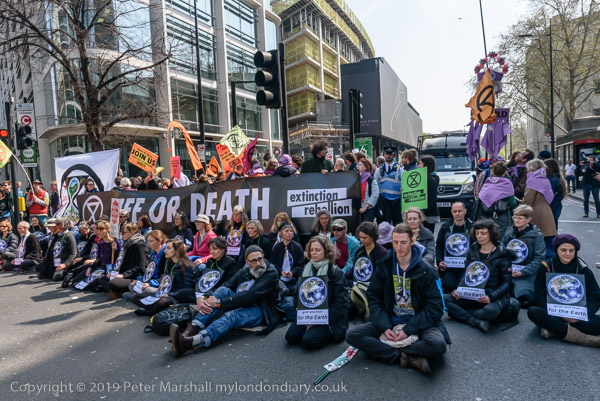
The Marble Arch itself is on the north edge of the traffic island in the centre of the large gyratory system here. It had been designed in 1827 by John Nash as a ceremonial entrance to Buckingham Palace, but in 1851 it was moved to its present position to serve as an entrance to Hyde Park at the time of the Great Exhibition.
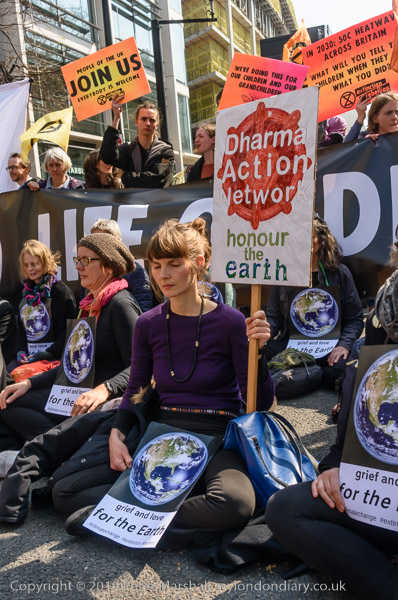
Unfortunately the widening of Park Lane in 1960-64 led to it being cut off from Hyde Park, in isolation on a traffic island. No traffic passes through it now, although you can still walk through its arches. Until the late 1960s three rooms inside the arch were in use as a police station, but are now unused.
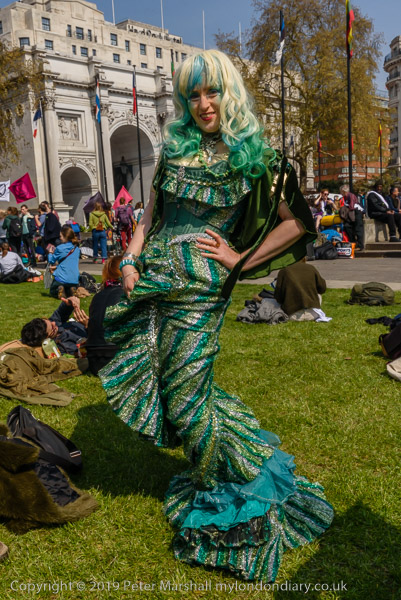
XR blocked traffic on all the roads leading to Marble Arch and tents filled most of the grassed area around, with the hard standing in front of the arch being used for stalls and performances, as well as a lorry equipped as a stage on Cumberland Gate. The area was occupied from the early hours of Monday 15th April. Police got the traffic moving again on Wednesday 24th, and XR finally left after a closing ceremony the following evening.
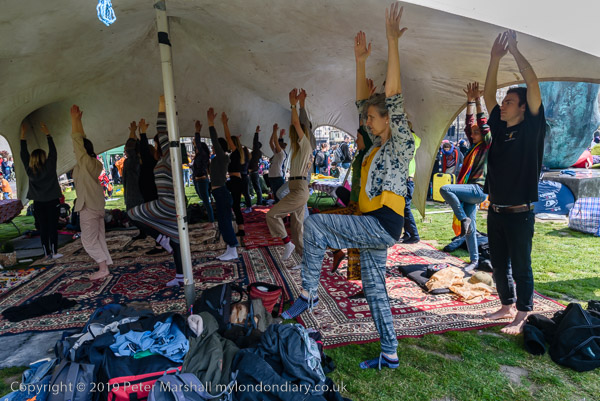
There wasn’t a great deal happening on either of the occasions I visited Marble Arch, but there were some major events on various of the evenings, with some well-known performers coming to perform and show their support. But I like to go home at night to a comfortable bed (and a good dinner) and left it to those staying in the camp to record.
More at Extinction Rebellion Marble Arch.
All photographs on this and my other sites, unless otherwise stated, are taken by and copyright of Peter Marshall, and are available for reproduction or can be bought as prints.
There are no adverts on this site and it receives no sponsorship, and I like to keep it that way. But it does take a considerable amount of my time and thought, and if you enjoy reading it, please share on social media.
And small donations via Paypal – perhaps the cost of a beer – would be appreciated.
